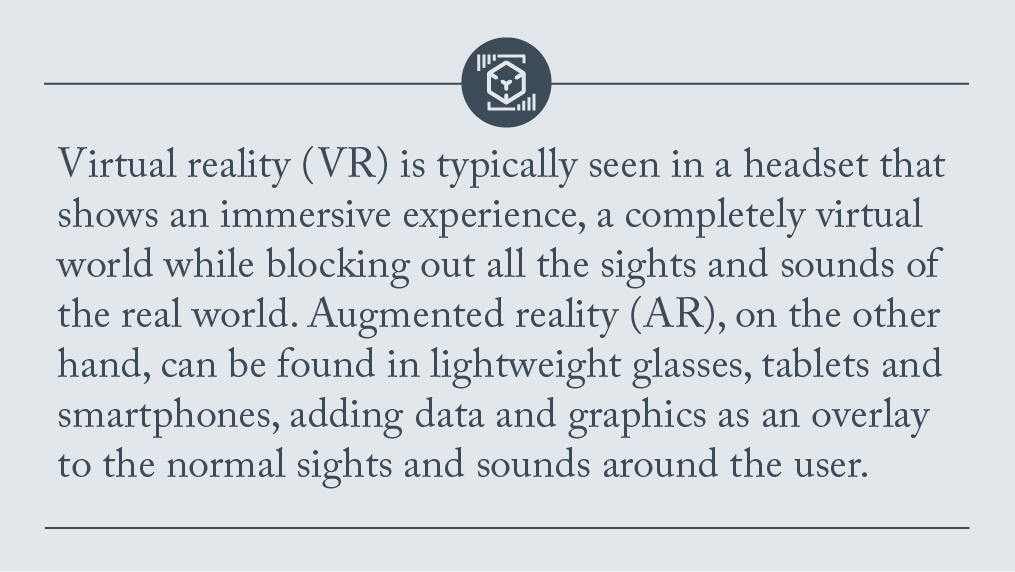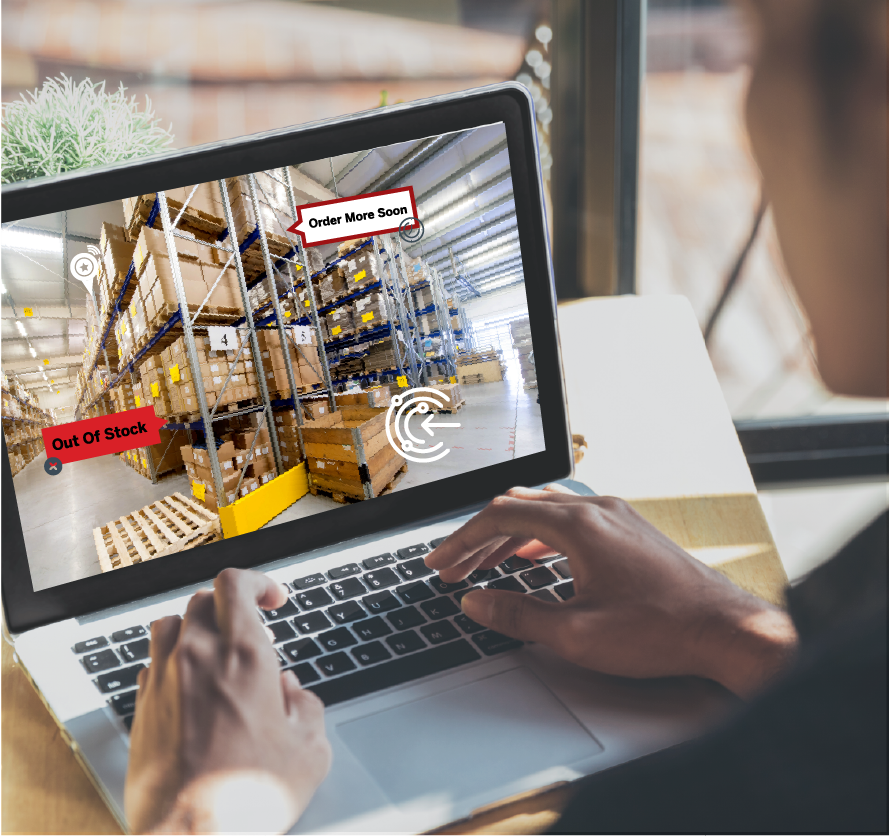Virtual reality is often a topic associated with science fiction, video gaming, and ultra-realistic amusement park rides; it can seem like a stretch to bring it into a work environment where serious results are required. However, the technology has grown by leaps and bounds in the last couple of years, with high-quality displays, powerful sensors, and processors packed into comfortable headsets becoming available on the market.

Due to the intensive manpower required in the logistics industry, there are many opportunities for using this technology to allow workers to work smarter, safer, and more efficiently. Let’s take a brief look at four use cases with solutions that are currently available in the market.
1. Warehouse Picking with Augmented Reality

Vision picking empowers the user to pick inventory without the encumbrance of a handheld scanner. The comfortable glasses can show all types of useful data to speed up picking, as well as reduce errors. Along with the pick location and item description, the user can see a photo of the product to reduce the likelihood of a miss pick. Navigational arrows can show the user where to find the next pick, and a diagram of the pick wall can show where the item is stowed. In addition, when the user looks at the actual stow location, the glasses can show a red or green glowing rectangle as an overlay, visually reinforcing that the picker is in the correct location (or not).
The user-friendly nature of this technology makes it easy to learn and is an ideal fit for onboarding new associates or for temps during peak seasons.
2. Remote Assistance with Augmented Reality
Augmented reality glasses have a built-in camera that allows real-time video streaming, giving remote users – sitting at a computer – the same forward-facing view as the associate wearing the glasses. In massive warehouses, much time is often wasted when an associate encounters difficulty and summons a supervisor. With AR, at the click of a button, the user can immediately show the supervisor the issue, visually, while conversing verbally as well.
This has other practical uses whenever a remote expert is required. A maintenance associate, overseeing a broad array of complex equipment, can quickly call in help from more experienced members of the team, or from equipment vendors, thus speeding up a response and reducing downtime.
3. Equipment Maintenance with Augmented Reality
Even if no remote expert is available in real-time, augmented reality can be used to train maintenance and repair technicians. Using a tablet, or even AR glasses, an expert can “tag” various parts of the equipment, adding an overlay of specs, maintenance steps and guidelines, graphics and technical diagrams. Later, when a technician glances at parts of the machine, via AR glasses or with a tablet or cell phone, the smart tags appear on screen, still “virtually” attached where originally placed, and the user can call up further troubleshooting information.
4. Virtual Reality Forklift Training
Several vendors now offer VR training for material handling equipment (MHE) drivers. The associate can wear a headset to view realistic warehouse scenarios, learning without endangering actual product, racking, or fellow associates. The learner can sit in a forklift simulator with controls and levers like a real forklift; alternately, some vendors can hook up the VR headset to a real forklift, providing training for a specific make and model of lift; of course, the lift itself never moves.
The learning modules guide the learner through basic MHE controls, startup and safety checklists, and simple driving skills. The lessons get progressively harder, requiring the driver to complete complex activities while enforcing safety guidelines. For example, users might be forced to restart a lesson if they fail to beep the horn at an intersection.

Picking the Right Fit
To ensure the right fit for your operation, familiarize yourself with the features offered by various vendors. Because it is a relatively new field, there can be dramatic differences in technology, pricing, and aftermarket support. If you think you’ve found a solution that offers an ROI, work with your vendor to do a small pilot. Evaluate not just the technology, but also user acceptance; will users be comfortable wearing the headsets for long periods of time? Do they experience fatigue, dizziness, or nausea? Work with a third-party logistics provider that has already tested or deployed these technologies; a 3PL can help you find the best fit for your operation and associates, and identify ROI and savings, separating the “virtual” from the “real” value.
